![]() Overview of NMRA DCC systems
Overview of NMRA DCC systems
> main > model > control > nmra dcc overview
updated february 2007
To give a better impression of which makes are available and wht they offer you, a table-style overview is given here. Not all manufacturers are listed, but included are most important European and American manufacturers.
|
Image
|
Manufacturer | # loco adresses | # of accessory adresses | # of speed steps | Cab bus system | feedback bus | computer interface |
notes |
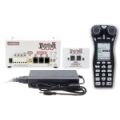 |
Digitrax | 9999 | 2048 | 14/27 - 28 - 128 | LocoNet | LocoNet | connects to LocoNet, RS-232, USB 2.0, LAN or WLAN by a seperate module. |
Leading US manufacturer. Complete range of products, that can be extended with products made by other manufacturers. |
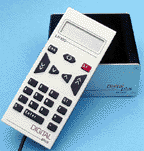 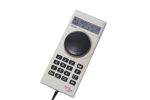 |
Lenz | 9999 | 2048 (firmware V 4.0) otherwise 1024 |
14/27 - 28 - 128 | XPressNet / X-Bus | RS- feedback bus, RailCom® | connects to XPressNet, your choice of RS232, USB 2.0 or Ethernet (2010), seperate module. |
Leading European manufacturer, nearly all products are NMRA certified. Complete range of products. |
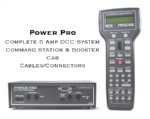 |
NCE | 9999 | 256? | 14/27 - 28 -128 | Cab Bus | Cab Bus | built-in in command station, RS-232, USB via seperate module |
Manufacturer now seems to concentrate on H0 and larger scales. Some N-scale suitable decoders available. Track circuits and other signalling accessories available. |
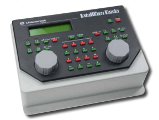 |
Uhlenbrock Intellibox Basic |
32 out of 9999 |
2000 | 14/27 - 28 -128 | LocoNet | LocoNet | built-in in central unit., USB 2.0 |
Central unit has 2 control knobs, built-in USB 2.0 interface and a built-in 3 Amp booster, can also send the
Märklin MM and Selectrix formats (locos only). |
 | Uhlenbrock Intellibox II | 9999 | 2048 | 14/27 - 28 - 128 | LocoNet | LocoNet, s88, RailCom® | USB 2.0 | Central unit has 2 control knobs, built-in USB 2.0 interface and a built-in 3 Amp booster, can also send the Märklin MM and Selectrix (locos only) formats. |
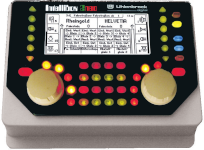 |
Uhlenbrock Intellibox II neo |
9999 dcc + mfx |
2048 |
14/27 - 28 - 128 |
LocoNet |
LocoNet, s88-N, RailCom® | USB , WLAN |
Upgraded version of the Intellibox II, WLAN interface added, new booster stage |
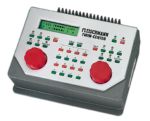 |
Fleischmann Twin Center |
9999 | 2000 | 14/27 - 28 - 128 | LocoNet | LocoNet, s88 | built-in in central unit, RS-232 |
Central unit has 2 control knobs, built-in
RS-232 interface and a built-in 3 Amps booster, can also send Selectrix
and the now obsolete FMZ formats. * Production ceased in 2010, successed by Roco 'Multi Maus' system, see Roco section * |
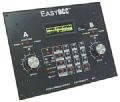 |
CVP Easy DCC |
9999 |
2048 |
14/27 - 28 - 128 |
CVP cab bus |
None |
built-in in command station, RS-232, special cable needed |
System is available in
both
kit and built-up versions. It was described in a series of articles in
'Model
Railroader' in 1997. Kits are no longer available (2005) |
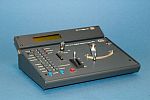 |
ZTC 511 | 9999 | 2047 |
14/27 - 28 - 128 | X-Bus | no feedback bus yet. (under development) |
seperate interface module, USB |
Central unit has steam loco-style controller,
built-in 5 Amps booster. Only system
made in the UK. |
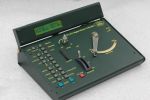 | ZTC 611 | 9999 | 2047 | 14/27 - 28 -128 | X-Bus | no feedback bus yet. (under development) | USB built-in | Successor to ZTC 511, upgraded technology. A long wait... |
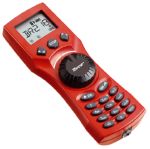 |
Roco MultiMaus |
9999 | 1024 | 14 - 28 - 128 | Roconet, X-Bus | seperate feedback bus | seperate interface RS-232 or USB |
Simple system that is easily upgraded to a mid-range system. Best suited for HO-scale, due to the lack of output voltage stabilisation. Also sold under the Fleischmann brand (2010 onwards) |
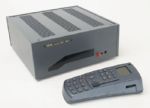 |
Zimo MX1 |
9999 | 256+ | 14/27 - 28 - 128 | CAN-bus | CAN-bus, | RS-232 built-in in central unit (programming only), CAN-bus dongle with RS-232 or USB 2.0 for layout control. |
Central unit consists of command station, 8 Amps booster and has a RS-232 interface. Accessories are controlled by CAN-bus modules or single-device decoders. |
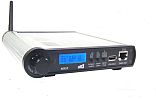  | Zimo MX10 | 9999 | 2048 | 14/27 - 28 - 128 | CAN-bus, Zigbee wireless (for use with radio handhelds) | CAN-bus, RailCom® | USB 2.0 and Ethernet | Central unit consists of command station, 12 Amps booster and has a USB 2.0 interface. Accessories are controlled by CAN-bus modules or single-device decoders. |
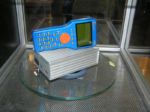 |
CT-Elektronik | 9999 | 1024 | 14/27 - 28 - 128 | XpressNet | Not yet, RS-bus (Lenz) under development |
RS-232 in command station / booster unit | Manufacturer seems to have ended this opration (2023 Q1) |
 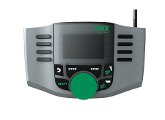 |
Trix |
99 ? (not known yet), 9999 with MC 2. |
None with Mobile Control 1 (top image), 320 with Mobile Control 2 (bottom image) |
14/27 - 28 - 128 |
Systems Link / CAN (propiatry) |
propiatry (same as cab bus) |
Built-in in 'Central Station' unit (announced) Ethernet |
DCC system offered by Trix, replaces Selectrix
equipment. Design based on Märklin equipment. |
  |
Massoth |
9999 |
2048 |
14/27 - 28 - 128 | DiMAX (propiatry) |
DiMAX (propiatry) | RS-232 in central unit |
System originally intended for use with G-scale layouts, a
new
central unit (DiMAX 800Z, pictured) has been introduced for use with smaller
scales. |
 |
ESU ECoS |
over 16,000 |
1024 |
14/27 - 28 -128 |
ECosLink (propiatry) |
ECoSLink (propiatry), s88, RailCom® prepared | Ethernet (RJ 45) in base station |
New high-end system from Germany, with great connectivity
options. Very modern design with 7-inch colour touchscreen. |
 |
ESU CabControl |
16384 |
1024 |
14/27 - 28 -128 | ECosLink (propiatry) | ECosLink (propiatry) | Ethernet (RJ45) in base unit, USB for charching and updating. |
Announced for Q3 2022, 7 Amp capacity |
 | Märklin Central Station (with upgrade by ESU) | 9999 | 2048 | 14/27 - 28 -128 | CAN (propiatry) | CAN (propiatry), s88 | Ethernet (RJ 45) in base station | With upgrade 3.0.0 from ESU unit sends MM, DCC, mfx and Selectrix loco formats, 4 Amp power capacity. Unit out of production and replaced by CS2. |
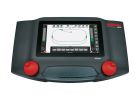 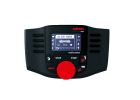 | Märklin Central Station 3, Central Station 3 + | 9999 (in DCC mode) | 2048 (DCC, 320 MM) | 14/27-28-128 | CAN (propiatry) | CAN (propiatry), s88 (CS3+ only) | Ethernet (RJ45) | Successor to CS1 and CS2 command stations. Supports mfx, mfx+, MM and DCC formats |
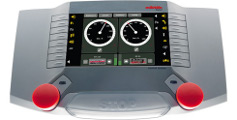 | Märklin Central Station 2 | 9999 | at least 320 | 14-28-128 | CAN (propiatry) | s88, CAN (propiatry) | Ethernet (RJ45) | Supports mfx, MM and DCC formats. |
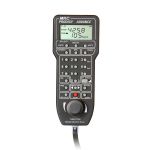 |
MRC Prodigy range | 9999 | 256? | 14- 28 -128 | propiatry cab bus | no feedback bus | Wireless link with USB-dongle or cabled USB with seperate interface module. |
Range of simple to medium-level systems. The Prodigy Advance system is distributed in the UK by Gaugemaster |
 |
Viessmann Commander | 9999 | 254 (MM) or 1024 (DCC) | 14 - 28 -128 | 'High-speed Bus' (HSB) and 'low-speed bus' (LSB, X-press Net, X-Bus, Roco compatible) | s88 + propiatry 'HSB' and 'LSB' - XPressNet, Roco compatible), RailCom® | USB 2.0 | New system fitted with colour screen. System connects with a propiatry control panel for points and signals. Production ended late 2016. |
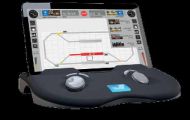 | Viessmann Commander 2 | 9999 dcc + mfx | 2048 | 14-28-128 | LocoNet | s88 | USB, LAN, HDMI | Successor of the Commander, uses tablet, smartphone or TV/monitor screen to display track diagram. Supports mfx decoders. |
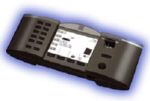 |
Bachmann Dynamis | 9999 | 80 |
14- 28 - 128 | ECosLink | none | none | New midrange system by Bachmann, 2-way infra-red connection to base station. |
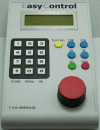 |
Tams Easy Control | 9999 (DCC) or 255 (MM) | 1020 (MM) or 2040 (DCC) | 14 - 28 - 128 (DCC) | EasyNet (propiatry), uses cat-5 network cables | s88, s88-N (cat-5 cables), RailCom® | RS-232 and USB 2.0 | Easy to set up system with more qualities than you might expect at first sight. Regulated output on boosters could be adjusted by fitting differnet zener diodes in the booster units (B-3 type only) |
  | Tams RedBox | 10239 (DCC) or 255 (MM) | 2040 (DCC) or 1020 (MM) | 14 - 28 -128 (DCC) | EasyNet, XpressNet, DECT cordless phones and old Märklin controllers via adaptors. | s88-N (RJ45 plugs), RailCom® | USB-2, RS-232 (V24) optional | Successor to Easy Control, with more features. Supports the m3 (Märklin Systems) format for loco decoders. |
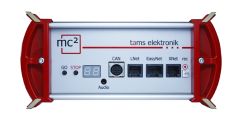 |
Tams mc2 |
DCC: 10239 MM: 255 m3: 16384 |
2040 (DCC) or 1020 (MM) | 14-28-128 (DCC) 14-27 (MM) 128 (m3) |
EasyNet, LocoNet (throttles only), CAN (Märklin only), XpressNet, BiDiB for accessory modules |
s88-N, BiDiB, RailCom® | LAN network |
modern
'base station', has built-in web interface, no special software needed,
compatible with all computer and mobile phone operating systems |
 | Hornby Elite | 254 out of 9999 | 255 out of 9999 | 14-28-128 | XPressNet | RailCom®, via XPressNet (not working yet) | USB 2.0 | Modern mid-range system, unstabilised output. Not easily available outside the UK |
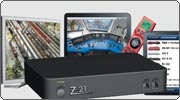 | Z21 | 9999 | 2048 | 14-28-128 | 3 X-bus, LocoNet, CAN (one each) | seperate feedback bus (same as Roco MultiMaus), RailCom®, LocoNet, CAN | WLAN and LAN | System is controllable from smartphone, tablet, Roco MultiMaus or LocoNet handheld |
 | TrainModules NaWi Digital Center | 9999 | unknown | 14-28-128 | ExpressNet, LocoNet, CAN | s88 (RJ45), LocoNet | USB, Ethernet, WLAN for mobile devices | Modern command station from Hungary, the complete top panel of the unit is a touchscreen. |
 | Digikeijs DR5000 | 9999 (DCC) | 2048 (DCC) | 14-28-128 | ExpressNet, LocoNet, RocoNet, X-Bus | s88-N, LocoNet, Roco feedback bus, RailCom® | USB 2.0, LAN, WiFi | Very affordable, lots of connections. Must be configured with a Windows PC. ** Update April 2023 - Digikeijs is declared bankrupt - business has ended ** |
 | Kuehn cOne | 9999 | unknown | 14-28-128 | XPressNet | Announced 2016, also suitable as analogue controller, still not available (2023 Q1) | ||
  | TCS | 9999 | 1024 minimum | 14-28-128 | WiFi (wireless), NCE Cab Bus, LCC | LCC | WiFi, LCC | Handheld wireless controllers (WiFi) already available, will work woth other systems or directly with a PC. |
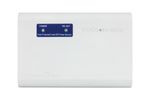 | DCC Concepts Cobalt-α | 9999 | 14-28-128 | NCE Cab bus | none | none | Intelligent
Booster unit that connects to a number of DCC command stations by an
adapter cable. Can be used as a command station to control DCC accessories
only. | |

|
DCC Concepts |
9999 |
? |
? |
? |
? |
? |
New system under development (2020) |
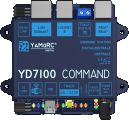 |
YaMoRC YD7100 |
9999 |
2048 (DCC) |
14-28-128 |
LocoNet, XPressNet (X-Bus) |
LocoNet, RBus, S88 (on extension module) |
USB, WiFi |
Expected Q3 2023, system is expandable with extra I/O ports. |
 |
Digsight (DXDC) |
9999 |
unknown |
14-28-128 |
LocoNet, XPressNet |
unknown |
WiFi |
Chinese made command station, that can be controlled by an app on your smart device. |
Listed are only those manufacturers who offer complete systems. There are quite a few manufacuters around that offer additional equipment. I would like to refer to the manufacturers' websites for more information, just click on the right name. Please note that some sites are in German only.
N-scale suitable decoders
Any decoder that fits inside an N-scale loco is N-scale suitable. In normal practice you are limited to the smaller-sized loco decoders. The list below gives an overview, but note that it is not complete.
 Digitrax
has a wide selection of N-scale suitable decoders. For common use ref.
DZ-123,
DN-121, DN-143 are very suitable. All these are relatively thick (about
4
mm) but have a power output up to 1 Amp! Digitrax also offers decoders
that
fit a particular model, these decoders have a reference number that
ends
with a letter, like DN-163K0, which is a decoder that fits quite a
number
of Kato locos. More information on the Digitrax website.
Digitrax
has a wide selection of N-scale suitable decoders. For common use ref.
DZ-123,
DN-121, DN-143 are very suitable. All these are relatively thick (about
4
mm) but have a power output up to 1 Amp! Digitrax also offers decoders
that
fit a particular model, these decoders have a reference number that
ends
with a letter, like DN-163K0, which is a decoder that fits quite a
number
of Kato locos. More information on the Digitrax website.
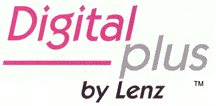 Lenz offers
4
N-scale
suitable decoders. All are very small and may fit many locos.
The 'Gold Mini'
decoder is their top-performance decoder with built-in 'Rail Com'
transponder. The new 'Silver Mini' decoder is similar in performance,
but without the transponder. It therefore has a lower price
Lenz offers
4
N-scale
suitable decoders. All are very small and may fit many locos.
The 'Gold Mini'
decoder is their top-performance decoder with built-in 'Rail Com'
transponder. The new 'Silver Mini' decoder is similar in performance,
but without the transponder. It therefore has a lower price
 ESU is the first German manufacturer to offer sound decoders
even down to N-scale.
Range has now been extended with decoders without sound unit and a few
accessories like the radio hand-held controller and now the ECoS DCC system.
ESU is the first German manufacturer to offer sound decoders
even down to N-scale.
Range has now been extended with decoders without sound unit and a few
accessories like the radio hand-held controller and now the ECoS DCC system.
 NCE
mainly
offers
H0-sized decoders, but new are N-scale suitable decoders. NCE follows
the
Digitrax way, making replacement circuit boards. Available is one for
the
Intermountain FT diesel loco. A decoder that fits the Kato 'Genesis',
E8,
PA and a number of Japanese prototype locos is announced (similar to
Digitrax
DN-163K0). Other N-scale sized decoders are under development.
NCE
mainly
offers
H0-sized decoders, but new are N-scale suitable decoders. NCE follows
the
Digitrax way, making replacement circuit boards. Available is one for
the
Intermountain FT diesel loco. A decoder that fits the Kato 'Genesis',
E8,
PA and a number of Japanese prototype locos is announced (similar to
Digitrax
DN-163K0). Other N-scale sized decoders are under development.
 Uhlenbrock
has indroduced several N-scale suitable decoders, their first was a small sized decoder at only
12.2
x 8.6 x 3.7 mm! It even accepts Märklin's Digital and Trix
Selectrix formats. It is
also
compatible with coreless motors like Faulhaber, Maxon and Escap.
Further
DCC features are: long addresses, back-EMF motor control. Power output
is
500 mAmps. A unique option is the use of F3 and F4. F4 toggles the
momentum
on or off, whilst F3 halves the speed range. Great for shunting
operations!
Uhlenbrock
has indroduced several N-scale suitable decoders, their first was a small sized decoder at only
12.2
x 8.6 x 3.7 mm! It even accepts Märklin's Digital and Trix
Selectrix formats. It is
also
compatible with coreless motors like Faulhaber, Maxon and Escap.
Further
DCC features are: long addresses, back-EMF motor control. Power output
is
500 mAmps. A unique option is the use of F3 and F4. F4 toggles the
momentum
on or off, whilst F3 halves the speed range. Great for shunting
operations!
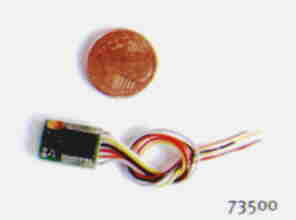 A
Uhlenbrock N-scale suitable DCC decoder.
The
coin is a 1 Eurocent coin.(photo: Uhlenbrock)
A
Uhlenbrock N-scale suitable DCC decoder.
The
coin is a 1 Eurocent coin.(photo: Uhlenbrock)
Viessmann now offers loco decoders, to everyone's surprise. An N-scale suitable decoder that is slightly larger than the one offered by Uhlenbrock, at only 9.3 x 14 x 3.4 mm. Two varieties are offered: one with long leads and one with the NEM-651 or NMRA 'S' standard plug. Maximum power output is 500mAmps. The larger size Viessmann decoder may be of interest when you want to convert EMU's or DMU's. It is thinner than the mini-decoder, but has a larger footprint at 13.9 x 21.9 x 2.9 mm. It may be offered at a lower price. Viessmann also offers accessory decoders, 'digital track-circuits' that feed back into Märklin's s88 feedback bus and signals that have a built-in decoder as well as many scenic accessories and a German-style catenary system. A command station was announced at the 2006 Nürnberg Toy Fair and is available from December 2006.
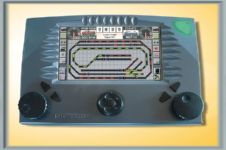
 Viessmann 'Commander' DCC command station and 'GBS' modular control panel. (photo: Viessmann)
Viessmann 'Commander' DCC command station and 'GBS' modular control panel. (photo: Viessmann)
 Zimo
offers a number of true N-scale suitable decoders. A
full-featured
high-end decoder that is finally available. Development of this decoder
took
a long time. That it is available now shows that Zimo is serious on DCC
for
N-scale. It is only 14 x 9 x 3 mm at there is a variety that fits the
NEM
651 socket.
Zimo
offers a number of true N-scale suitable decoders. A
full-featured
high-end decoder that is finally available. Development of this decoder
took
a long time. That it is available now shows that Zimo is serious on DCC
for
N-scale. It is only 14 x 9 x 3 mm at there is a variety that fits the
NEM
651 socket.
 CT-Elektronik
offers Zimo-style decoders, which are fully compatible with Zimo
systems,
including Zimo's transponding system! The range includes N-scale
suitable
loco decoders, but also function-only decoders. Latest decoder is an N-scale suitable sound decoder. A command
station/booster
unit and handheld controller are also on offer.
CT-Elektronik
offers Zimo-style decoders, which are fully compatible with Zimo
systems,
including Zimo's transponding system! The range includes N-scale
suitable
loco decoders, but also function-only decoders. Latest decoder is an N-scale suitable sound decoder. A command
station/booster
unit and handheld controller are also on offer.
** UPDATE ** 2023-Q1 Manufacturer seems to have ended this business. The website is now offline.
Kuehn offers loco and function
decoders that can be built in cab cars of MUs. Some decoders also
operate on the MM signal format.
 TCSis
a US-based DCC decoder
manufacturer. TCS offers a wide range of smaller-sized decoders. TCS
has 2-board decoders that may be useful to convert Tomix and other
split-frame locomotive models. TCS now offers a DCC command station,
handheld controllers and a booster. and there's more to come!
TCSis
a US-based DCC decoder
manufacturer. TCS offers a wide range of smaller-sized decoders. TCS
has 2-board decoders that may be useful to convert Tomix and other
split-frame locomotive models. TCS now offers a DCC command station,
handheld controllers and a booster. and there's more to come!
 Tams Elektronik offers a range of electronic accessories, from blinker circuit to a complete DCC system.
Tams Elektronik offers a range of electronic accessories, from blinker circuit to a complete DCC system.
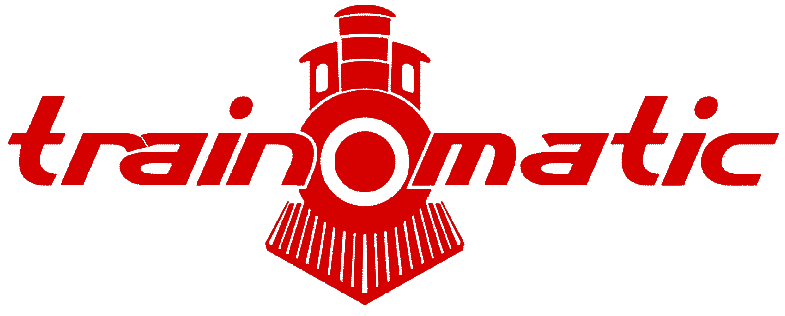 Train-O-Matic from Romania offers budget friendly DCC loco and accesorry decoders, DCC interior lights, track circuits and feedback modules.
Train-O-Matic from Romania offers budget friendly DCC loco and accesorry decoders, DCC interior lights, track circuits and feedback modules.
 QDecoder
from Germany offers new types of signal and accessory decoders. These
can be operated by a special electronic module. QDecoder also offers
special colour-light signal decoders, with pre-programmed CVs to mimic
specific (DB, SBB, NS and ÖBB) prototypes.
QDecoder
from Germany offers new types of signal and accessory decoders. These
can be operated by a special electronic module. QDecoder also offers
special colour-light signal decoders, with pre-programmed CVs to mimic
specific (DB, SBB, NS and ÖBB) prototypes.
 DCC Concepts
offer a range of DCC accesories, loco decoders, accessory decoders, DCC
boosters, control panel components and loads of other bits.
DCC Concepts
offer a range of DCC accesories, loco decoders, accessory decoders, DCC
boosters, control panel components and loads of other bits.
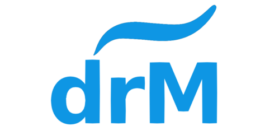 drM
drom Taiwan offer a wide range of DCC decoders, many of them are a made
to fit Kato locomotives and MUs without any 'chopping' of the bodywork.
Coach lighting units and accessory decoders are also on offer.
drM
drom Taiwan offer a wide range of DCC decoders, many of them are a made
to fit Kato locomotives and MUs without any 'chopping' of the bodywork.
Coach lighting units and accessory decoders are also on offer.
 SNJPN
(Nagasue) offers decoders matched for Japanese model trains. Available
are: loco decoders, motor-decoders, head / tail light decoders,
interior light decoders, a programming unit that connects to your
computer's USB port and a special decoder for the Tomix track cleaner.
SNJPN
(Nagasue) offers decoders matched for Japanese model trains. Available
are: loco decoders, motor-decoders, head / tail light decoders,
interior light decoders, a programming unit that connects to your
computer's USB port and a special decoder for the Tomix track cleaner.
 ZTC
now under ownership of Taunton Controls Ltd.offers two small-sized decoders, aimed at the British market. This
means
that one of the two decoders has no function outputs at all! A variety
is
available that does not need a complete isolation of the motor brushes,
very
suitable to convert Graham Farish British N-scale locos. New N-scale
suitable
decoders are under development.
ZTC
now under ownership of Taunton Controls Ltd.offers two small-sized decoders, aimed at the British market. This
means
that one of the two decoders has no function outputs at all! A variety
is
available that does not need a complete isolation of the motor brushes,
very
suitable to convert Graham Farish British N-scale locos. New N-scale
suitable
decoders are under development.
** UPDATE ** 2023-Q1 Taunton Controls is still in business, but development of new products is very slow.
 MAX ambient
from Germany offer special accessory decoders, such as a light effect
decoder, a freely configurable signal decoder (up to 48 signal lamps),
a sound effect decoder which palys sounds froma microSD memory card
will follow soon.
MAX ambient
from Germany offer special accessory decoders, such as a light effect
decoder, a freely configurable signal decoder (up to 48 signal lamps),
a sound effect decoder which palys sounds froma microSD memory card
will follow soon.
Which DCC-system suits me?
The only one who can answer that question is you. A good salesman can assist you in making the right choice, as could this website. Most important is to make a decision which fits your ideas and your budget. N-scale suitable decoders get more affordable these days, due to a wider choice offered by the manufacuters, which increases competition. One important thing to note is the output voltage of the boosters (or central unit in some cases). It is best that this output is stabilized. Only Lenz, Digitrax, NCE and Zimo offer systems with stabilized outputs. This also means that you are 'caught' to a style of cab bus and matching controllers. The Arnold system may be a good choice when you want a 'mid-end' system. Everyhting is possible, apart from transponding, with the aid of a few components offered by other manufacturers. Hopefully, the supply problems will be solved soon by Lima, the parent company of Arnold. Roco's system has also evolved from a basic system into a 'mid-end' system, with similar features offered as the Arnold system. High-end systems like the Digitrax Chief and Super Chief, Lenz and Zimo systems offer everthing you can dream of, but at a price! A high-end system is costly, but offers all features, like transponding loco adresses into the feedback bus, computer-control etc. Uhlenbrock, Digitrax and Lenz offer cheaper starter kits with fewer features that can be upgraded into a high-end system if you want.
Do-it-yourself
It is possible to build your own DCC equipment. You need to have some skill in building electronic circuits, but it is not very complicated. Most D-I-Y DCC systems use a PC to generate the DCC commands, a booster sends these to the tracks. Most D-I-Y systems only offer locomotive control, but for many applications this is enough. Links to D-I-Y DCC projects can be found on the Fremo website. EasyDCC by CVP is a kit for a complete DCC system. EasyDCC has no feedback bus and has its own cab bus system. EasyDCC is a good 'mid-end' system, very suitable when you only want loco control and limited accesory control. The British Model Electronic Railway Group (MERG) offer their own design as a kit to their members. PCB layouts, schematics, descriptions, parts lists and programming code is available to anyone on the MERG website.
Computer control
For more extended systems and larger layouts, computer control may be a good option to replace the control panel. You will need accessory decoders to control the turnouts and signals and feedback modules that sense the status of track-circuits around your layout. With transponding it is possible to read decoder adresses, but as far as I know there is not yet a standard for transponding, so each manufacturer offering this feature is on his own at the moment. At this moment, only Zimo (first!), Digitrax and Lenz offer transponding.
For computer control, you connect your computer via the RS-232 serial port , USB 2.0 or network to the command station of your DCC system. Sometimes, dependent on the system you use, you will have to purchase a seperate interface, other systems may have the interface built-in in the command station. The second part is control software, in which there is a remarkably wide choice. Below are some links to control software suppliers. Please note that not all software is offered for Apple Mac or Linux systems. JMRI and iTrain are Java-based and will run on a Mac or Linux system.
 JMRI
is an open-source software with modules for decoder programming,
control panels, operation sequences etc. etc. It even supports the X10
protocol to control room lighting. It's Java based and available for
free and runs on Windows, Mac and Linux systems. JMRI supports many DCC
systems, but not all combinations offer full functionality. Best of all, JMRI is offered free of charge. Donations are welcome!
JMRI
is an open-source software with modules for decoder programming,
control panels, operation sequences etc. etc. It even supports the X10
protocol to control room lighting. It's Java based and available for
free and runs on Windows, Mac and Linux systems. JMRI supports many DCC
systems, but not all combinations offer full functionality. Best of all, JMRI is offered free of charge. Donations are welcome!
Jürgen Freiwald offers Railroad&Co., which also offers a wide range of control options, and supports a wide range of systems.
Railware is rather new. Supports most systems.
Koploper is a computer control package that is offered free! It is only available in the Dutch language and supports Märklin, Selectrix, Lenz and Uhlenbrock systems. Registration at no extra cost is needed for full functionality.
ModellStw
stands for Modell Stellwerk, model signal box in English, software
simulates German SpDr and Swiss Integra Domino mimic panels or German
ESTW or Swiss Iltis computer signal controls. Looks and works like the
prototype!
iTrain by Berros Software runs on Windows, Mac or Linux systems, and supports many DCC control systems.
RocRail is an open-source software that upport many DCC systems, and offers control by mobile devices such as iPhones, iPads and Android devices. RocRail operats under Windows, Linux and Mac OS X. RocRail is offered free of charge, donations are welcome however.
STP and PFüSch are two packages that are made especially for use with Zimo systems. STP is only a computer control panel, with timetable and automation options. PFüSch or 'ADaPt' is a decoder programming tool whcih can also be used to control locomotives and accessories. STP takes full adavntage of the address read-out function of the Zimo decoders and feedback modules.
Acknowledgements
Most of the information on these pages comes from the manufacturer's websites and catalogues. Please click on the links for more information. Quite a few model railway magazines have articles on digital command control in their columns. I would like to refer to N-Bahn Magazin 5-2000, Alba Verlag, Düsseldorf Germany, for a detailed article on N-scale decoders. But things develop fast in modern electronics, so you need to update your knowledge regularly.
Pages written by Mark Veneman
Scans by Mark Veneman
<= Back to the Digital Command Control page
 Modelling
Modelling Layouts
Layouts Modeller's
Corner
Modeller's
Corner  Train Simulators
Train Simulators  Various
Various